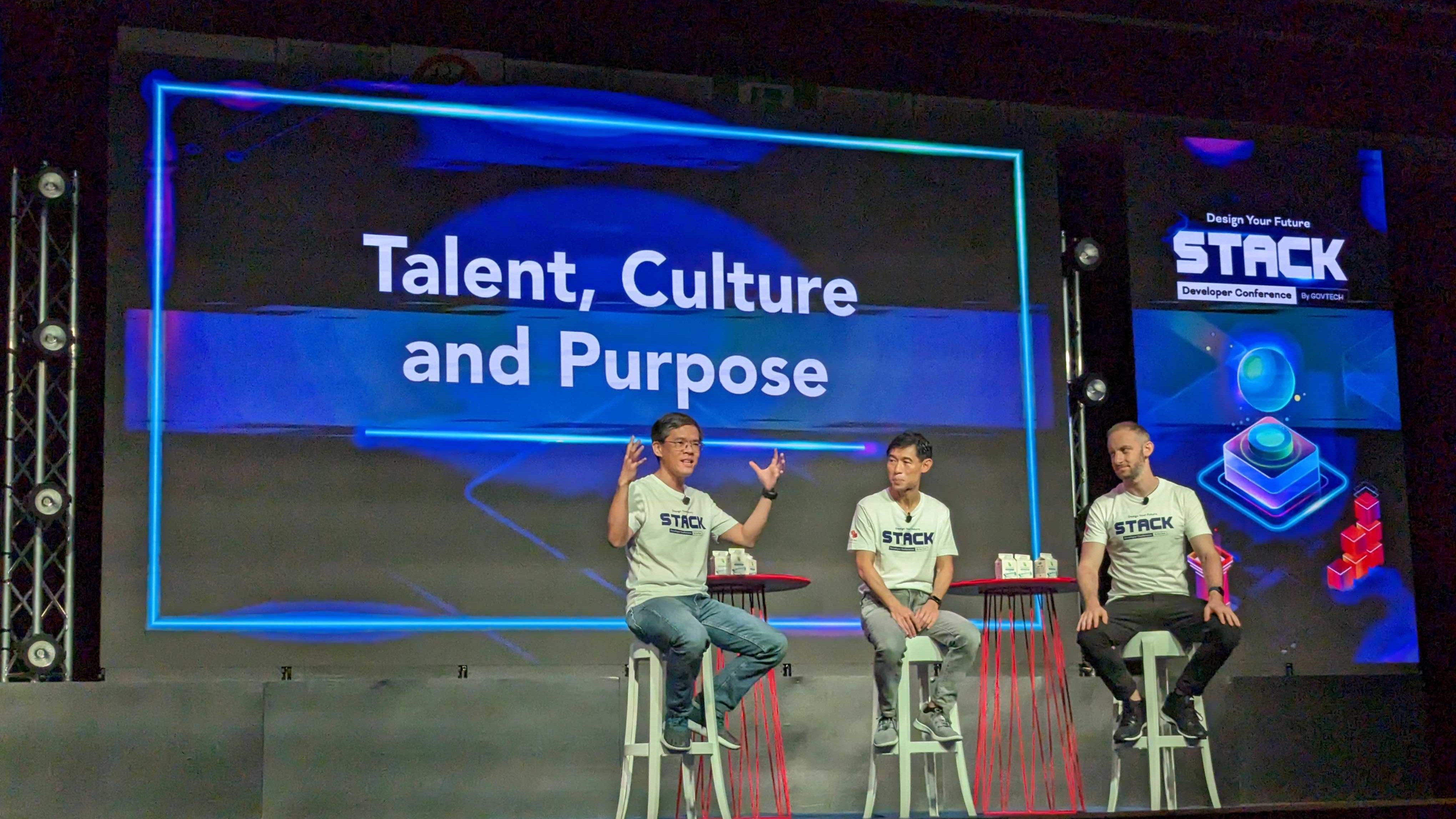Hiring is down 14% in Singapore following global surge
This has been referred to as a rebalancing of the industry, with more jobs available on the market than there are people available for the jobs


The latest recruitment data has revealed that hiring levels in Singapore are down 14% in 2022 after a 40% global surge was recorded in the previous year.
Careers and recruitment platform LinkedIn reported that between 2020 and 2021, the world saw a 40% increase in hiring across all industries - a figure that has not plummeted according to data taken between 2021 and 2022.
Singapore's hiring rate has fallen 14% which reflects the global average with different countries reporting decreases in hiring between 12% and 18%, according to Frank Koo, head of Asia, talent, and learning solutions at LinkedIn, speaking during a panel discussion held at Stack 2022, a developer conference organised by GovTech, Singapore's digital transformation agency.
Koo called this a rebalancing of the industry. What LinkedIn has found in Singapore, and other countries around the world, is that there are still many more jobs available on the market than there are people available for the jobs.
Recruiting the right talent now requires businesses to rethink their overall offering when it comes to the job package. In order to attract employees, organisations will have to prove what they can offer workers when it comes to their skills development as well as career development, said Koo.
Additionally, tech companies have pulled many of the best people out of the jobs market in the last five years, said Noah Pepper, former APAC head at Stripe and GovTech board member.
Retaining such skilled individuals has proven beneficial to the companies that were able to attract them - these people have added great value to their respective businesses through research, development, and the delivery of new products.
Get the ITPro daily newsletter
Sign up today and you will receive a free copy of our Future Focus 2025 report - the leading guidance on AI, cybersecurity and other IT challenges as per 700+ senior executives
However, smaller companies and other organisations outside of the tech sector have found it more difficult to hire the right people for the job because the talent pool has decreased and thus recruitment has faced new challenges.
Pepper said there’s currently an uneven distribution of labour change for big tech companies as they pull back, referring to how a number of big tech companies have fired employees recently.
Despite this, there are plenty of small early tech companies still hiring, and plenty of venture capital money on the market. There are also lots of non-tech companies that now have the opportunity to expand their technical teams.
The panellists also discussed some of the transformational changes in the world of work that have come about as a result of the pandemic, highlighting that such transformations have evolved into modern-day buzzwords and phrases, such as 'working from home' and 'return to the office'.
However, according to Kok Ping Soon, chief executive at GovTech, the latest concept on the minds of business leaders is 'quiet quitting'.
Quiet quitting is a phrase to describe idea that employees complete their work doing what they can, and don’t spend unnecessary additional time on their work, said Soon.
RELATED RESOURCE

Employees are choosing how they work
And with the right secure digital strategy, this could be a great thing for your business: today and far into the future
He questioned whether quiet quitting is taking place in Singapore, or whether it was a calibration of the workforce. Soon added that Singaporeans are the second most hardworking workforce in the world, in terms of overtime.
It’s really about people just doing enough to fulfil their role, said Koo, who believes it is based on two different environmental factors.
The first is where workers are trying to establish a healthy boundary around where they work so they can contribute to work at the same time as maintaining mental wellness. On the other hand, he outlined that there are a number of workers who aren’t engaged in their jobs, pointing to a Gallup survey that found 30% of workers in Asia are engaged, meaning that two-thirds aren’t engaged.
Koo said it was important for leaders to provide the right opportunities and collaborative culture for employees so they can bring their best selves to work. At the same time, he said employees have a growth mindset meaning that they know their career has ups and downs, and they’re working towards improving it.
Some believe, such as Pepper, that quiet quitting is ultimately a leadership problem which comes down to how organisations structure accountability within their teams.
It’s a problem if the leadership approach is aiming to get employees back in the office for a specific number of hours and measuring them by that metric, instead of whether tasks are completed appropriately or whether customers are happy, for example.
He added that over the years, he didn’t care what hours employees or colleagues were working, or whether they were in the office or not, but what’s important was that goals were set and accomplished.
“I think, as an organisation, you have to be paranoid about the incentive structure that you create, because humans are really, really good at sniffing out what the leaders care about,” said Pepper. “And if they care about people showing up in person, and that’s the main thing they’re paying attention to, folks will show up but they’re going to find ways to take back something else for themselves.”
Zach Marzouk is a former ITPro, CloudPro, and ChannelPro staff writer, covering topics like security, privacy, worker rights, and startups, primarily in the Asia Pacific and the US regions. Zach joined ITPro in 2017 where he was introduced to the world of B2B technology as a junior staff writer, before he returned to Argentina in 2018, working in communications and as a copywriter. In 2021, he made his way back to ITPro as a staff writer during the pandemic, before joining the world of freelance in 2022.
-
 Tech talent shortages mean firms are scrapping traditional recruitment strategies
Tech talent shortages mean firms are scrapping traditional recruitment strategiesNews With more than half of enterprise leaders worried about future skills shortages, many organizations are turning to a range of new techniques to expand potential talent pools.
By Emma Woollacott
-
 Employees are dead set on flexible working arrangements – three quarters would turn down a role that didn't offer hybrid options as work-life balance becomes more important than pay
Employees are dead set on flexible working arrangements – three quarters would turn down a role that didn't offer hybrid options as work-life balance becomes more important than payNews New research shows workers are increasingly demanding flexible working arrangements from employers.
By Emma Woollacott
-
 Half of jobseekers turned down offers last year amid growing demands on employers
Half of jobseekers turned down offers last year amid growing demands on employersNews An increasingly competitive talent landscape means employers are being forced to offer a wider range of incentives
By Ross Kelly
-
 Boomi snaps up former MuleSoft executive as APJ channel lead
Boomi snaps up former MuleSoft executive as APJ channel leadNews Global software veteran Jim Fisher will work to expand the company’s channel operations across the region
By Daniel Todd
-
 UK tech workers change jobs en masse as job security withers
UK tech workers change jobs en masse as job security withersNews Economic uncertainty, redundancies, and the desire for greater job stability are forcing workers to look elsewhere
By Ross Kelly
-
 Why Microsoft Teams has only just launched in China
Why Microsoft Teams has only just launched in ChinaNews The tech giant has officially launched Teams via its local partner in China, after it was launched globally in 2017
By Zach Marzouk
-
 UK startup's Equinix deal marks step towards broad quantum computing access
UK startup's Equinix deal marks step towards broad quantum computing accessNews Businesses around the world will be able to use its quantum computing as a service platform through Equinix
By Zach Marzouk
-
 MI5 to establish new security agency to counter Chinese hacking, espionage
MI5 to establish new security agency to counter Chinese hacking, espionageNews The new organisation has been compared to GCHQ’s NCSC, and will provide companies advice on how to deal with Chinese companies or carry out business in China
By Zach Marzouk

